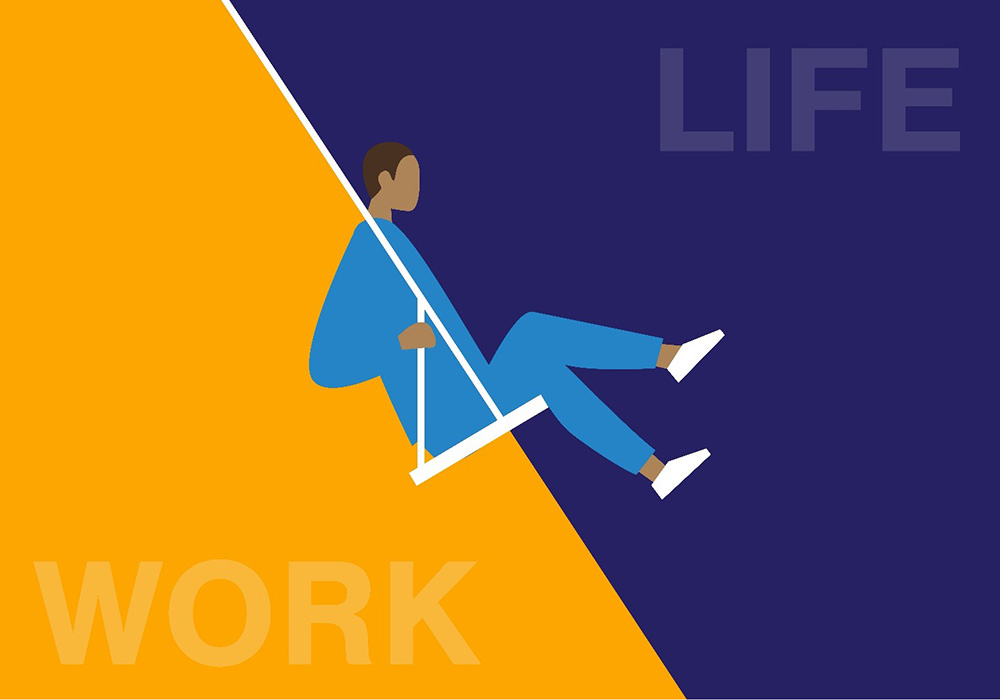If you feel that the hours in your day are all work and no play, you’re not alone. More than 20% of RNs reported working 41–50 hours per week on the 2022 National Nursing Workforce Survey—a statistic that’s increased since the 2017 and 2020 surveys, the National Council of State Boards of Nursing and the National Forum of State Nursing Workforce Centers said. Nurses are already overworked and burned out, and well-meaning consumer health media suggestions to simply “practice work–life balance” may add feelings of stress and inadequacy.
Life Is a Pendulum, Not a Scale
The term work–life balance implies a binary between the job and whatever lies outside the job, but the reality is more complex. Business consultant Ashley Janssen considers it a pendulum rather than a scale: “You are the pendulum, constantly swinging between any number of different areas of focus. . . . The time, energy, and attention that you give these areas are never in any particular balance but instead in regular flux.” Harvard Business Review calls it a continuous cycle that evolves with our circumstances and priorities.
How We Got Here
Although they selflessly staffed the frontlines, the COVID-19 pandemic presented problems for healthcare workers. While employees in other industries worked from home, healthcare professionals faced increased work hours, high COVID-19 mortality rates, and other common life stressors, which led to major work–life interference. On the 2022 National Nursing Workforce Survey, 62% of RNs reported an increased workload during the pandemic and 45% felt burned out. Nurses with 10 or fewer years of experience said they felt emotionally drained more frequently than their more experienced counterparts.
In a study of the work-related effects of pandemic on nursing faculty at Canadian universities, researchers defined work–life interference as “as an inter-role conflict where work demands make it such that one is unable to concurrently meet personal life demands or vice versa.” Researchers noted that the interference is bidirectional but that work often interferes with other aspects of life more than life interferes with work. They linked work–life interference to burnout, high turnover, and career dissatisfaction among nursing faculty. In a separate study of U.S. nursing faculty, researchers reported similar findings—although faculty experienced moderate disruption of work–life balance before the pandemic, it became more disrupted more during the pandemic.
What It Means for Nurses and the Profession
“High turnover contributes to increased burnout among remaining faculty furthering the supply–demand gap in nursing faculty workforce and the general nursing clinical workforce,” the Canadian researchers said. In other words, the negative effects on nursing faculty could exacerbate the shortage of nursing staff that health systems are already facing. Some estimates have projected that by 2025, the workforce will see a shortage of 200,000 to 450,000 nurses.
Steps Toward a Solution
Confronting work–life interference is an ongoing process of adapting to challenges over time. It involves self-care and resiliency. Pausing and recognizing the causes of negative feelings are the first steps. From there, set priorities and make changes, such as establishing clear boundaries so that work doesn’t interfere with family and leisure activities. Additionally, research has shown that mindfulness meditation can reduce stress and feelings of burnout and increase resiliency.
Nurse leaders and healthcare administration can support nurses to create space between work and life and prevent consequences such as burnout. The National Institute for Occupational Safety and Health (NIOSH) has recommendations on supporting employees for organizations, such as appropriate benefits, sick leave, and open communication. For supervisors and other nurse leaders, NIOSH recommended regular check-ins with employees and promoting flexibility in schedules and roles.
Find more strategies to support oncology nurses’ well-being and resiliency—both at the individual and healthcare-system level—in ONS’s Nurse Well-Being Learning Library.






